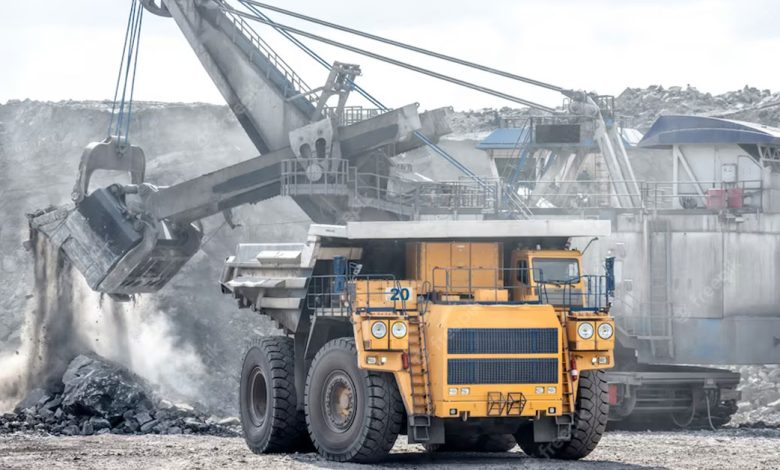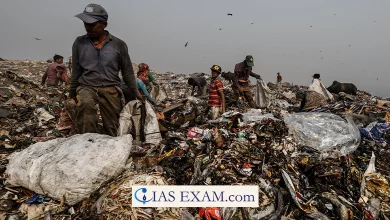Daily Current Affairs for UPSC
CPCB’s Guidelines for India’s Stone Crusher Sector
Syllabus- Environment and Ecology [GS Paper-3]

Context- It has long been acknowledged that stone crushing plants are major contributors to fugitive dust emissions and severe air pollution.
Key Highlights
- The Environmental Guidelines for Stone Crushing Units were recently released by the Central Pollution Control Board (CPCB) in response to the growing concern.
- The guidelines adhere to the suggestions made by the non-profit Centre for Science and Environment (CSE) in New Delhi.
What are the Key Guidelines Delivered By CPCB?
- Stone crushing’s source emissions, product storage, transportation, water use, and legal compliance are all covered by the CPCB guidelines.
The guidelines are notable for the following:
- Before beginning their operations, the stone crushers should obtain the State Pollution Control Board’s (SPCB) consent to establish and operate (CTO).
- The conditions outlined in the CTO by the concerned SPCB/PCC and the emission standards outlined in the Environment (Protection) Rules, 1986 must be met by the stone crushing unit.
- Dust suppression systems, covers, screens, and sprinklers, among other pollution control measures, should be put in place to cut down on dust emissions from crushing, loading, and unloading activities.
- To keep dust from blowing around, they should also store their products in covered areas or silos.
- The stone crushers should use water sparingly, make sure it is available and of high quality, get their raw materials from legal sources, and keep accurate records of their transactions.
- A District Level Committee to be established under the chairmanship of the District Magistrate/Deputy Commissioner in order to regularly carry out surprise inspections for the purpose of monitoring stone crushing facilities under their jurisdiction.
- The stone crusher ought to conduct a health survey of the employees every half year.
What is the problem with stone crushing machines?
- In India, stone crushing plants are a major contributor to air pollution.
- Crushed stones are produced by these units and used as raw materials in a variety of construction projects.
- Stone crushing, on the other hand, also produces a lot of dust, which is bad for workers’ and the community’s health.
- Additionally, this activity is linked to stone mining, which further degrades the environment.
Recent Events:
- A draft notification issued by the Haryana government in December 2022 called for easing the proximity requirements for new stone crushers located close to residential areas.
- Environmentalists were critical of this because they feared that it would have an effect on farmland and worsen air quality.
- A CSE report from June 2023 stated that many Indian stone crushers were operating without SPCB consent or environmental clearance.
- The majority of these units lacked proper pollution control and monitoring systems, according to the report.
Steps to Take to Fix the Problem:
- The Environment Pollution (Prevention & Control) Authority (EPCA) prohibited the activity of the stone smasher units, alongside block ovens and sweltering blend plants, under the execution of the Graded Response Action Plan (GRAP).
- The steps that will be taken by various government agencies to keep the air quality in Delhi-NCR from getting worse and to keep PM10 and PM2.5 levels from going above the “moderate” category on the national Air Quality Index (AQI) are included in GRAP.
- In May 2023, a concentrate by scientists from Pune College uncovered that a model stone smasher unit in Pune had effectively carried out contamination control gauges and decreased its residue emanations by 90%. The study suggested that other stone crushers in India could learn from these kinds of units.
What is the Central Pollution Control Board?
- The Water (Prevention and Control of Pollution) Act of 1974 authorized the establishment of the CPCB, a statutory organization, in September 1974.
- In addition, the Air (Prevention and Control of Pollution) Act of 1981 entrusted CPCB with these responsibilities.
- It is India’s highest authority on pollution control and environmental protection. It collaborates with the State Pollution Control Boards (SPCBs) and other agencies and is a part of the Ministry of Environment, Forest, and Climate Change (MoEFCC).
- Air quality management, water quality management, hazardous waste management, environmental assessment, laboratory services, information technology, public participation, and other aspects of pollution control are all handled by divisions within the CPCB.
Conclusion
- Although the CPCB guidelines cover a lot of important aspects of pollution control, there are still some areas that need more work and attention. The rules don’t address commotion outflows and the planning of activities for independent stone smashers, which frequently make burden and distress close by inhabitants.
- Additionally, it is essential to direct SPCBs to effectively enforce the guidelines and to provide specific timelines for stone crushers to adhere to them.





.png)



